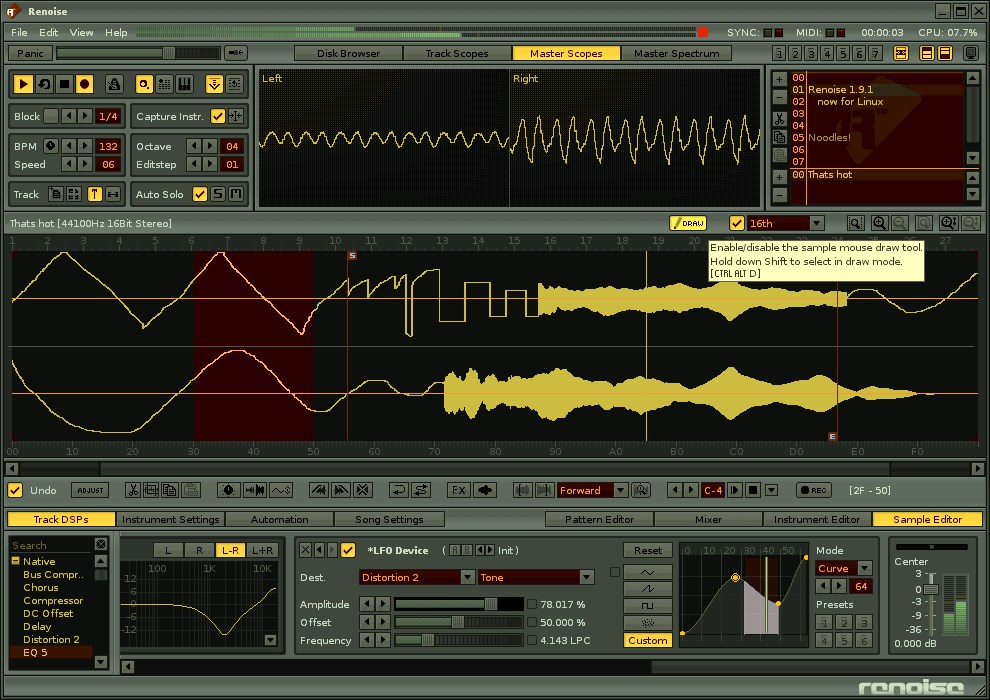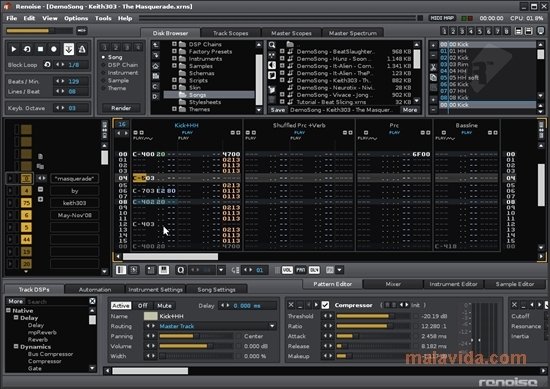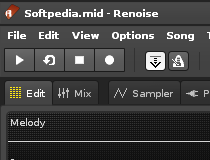
– The plugin is not supported by the host ( ie, if you’re bridging a 32bit plugin, check if it’s detected by the 32bit version of that host ).ĥ – “My bridged plugin appears unregistered and / or its settings aren’t saved/loaded.” – You are accidentally including both the bridged files folder and the original plugins in the scan ( some hosts will ignore duplicate plugins ). – Some hosts will need a plugin rescan and restart. – This is a permission issue, make sure the folder has the necessary permissions and/or that you’re running an administrator account.Ĥ – “My bridged plugins are not detected by my host.”
#RENOISE MENU KEY INSTALL#
– No, all you need to do is install the new version over it and it’s all set.ģ – “jBridger states “0 files created”, although I selected a folder that contains plugins.” >Click here for a more detailed example<-Ģ – “I got an update, do I need to uninstall / rebridge anything?” It’s highly recommended that you create a separate directory for the files it will need to create. – After the installation, go to your Start menu, find the “jBridge” program folder, and run the jBridger tool, which will prepare the needed files for your host to use. – No additional configuration is needed after jBridge’s installation, these hosts implement direct support for jBridge and will use it as needed. If you’re using Cantabile v2.x / VSTHost / Podium 3.x / PSYCLE v1.10 / BloXpander v1.4.0 / Metro 6 / Band-in-a-Box 2015 ( or above these versions ):

Enable the option “Load using jBridge wrapper”.

Then, select the VST plugin you wish to use with jBridge, and in the Vst Configuration part click on “Plugin-in Properties”.

– Go to Tools->Cakewalk Plugin-in Manager, scan your plugins normally. ( Some of the most common issues with jBridge and, when possible, the solution – Last updated: )


 0 kommentar(er)
0 kommentar(er)
